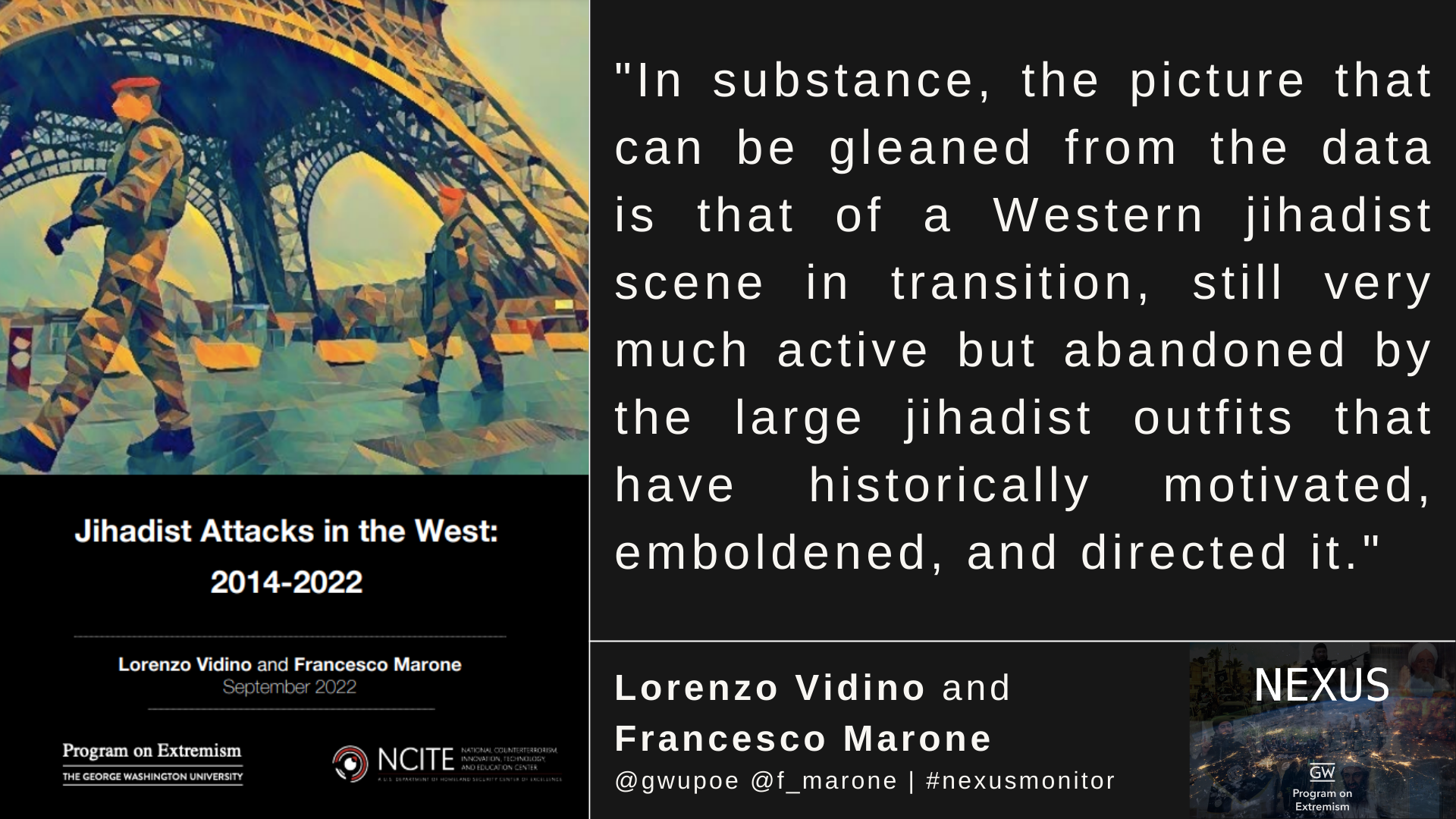Summary
Following the model of Fear thy Neighbor: Radicalization and Jihadist Attacks in the West, this report identifies all jihadist terrorist attacks that were successfully executed in North America (United States and Canada) and Europe (referred to here as the 27 Member States of the European Union in addition to Norway, Switzerland, and the United Kingdom) between June 29, 2014, the date of the self-proclamation of the Islamic State’s caliphate, and September 11, 2022. The report proceeds to analyze the demographic profiles and connections to jihadist organizations of the individuals who perpetrated these terrorist attacks.
This study is based on an original dataset built in 2016 that has since been regularly updated by the authors. Information and data collection is based largely on open-source material (including available official documents, scientific literature, news reports) in different languages, at times supplemented by interviews with government officials.
The data provided in this report seems to confirm the assessment held by most counterterrorism practitioners that while the jihadist threat in the West has decreased, it has not vanished. Three reliable, empirical indicators point to this conclusion. Whereas travel to join jihadist groups abroad has almost disappeared and total arrests have significantly decreased, the decline in attacks has not been very marked. What has substantially declined is the average lethality per attack, which is arguably a consequence of the diminished involvement of Islamic State-linked operatives. It should also be highlighted that authorities, particularly in Europe, have achieved substantial successes in thwarting attacks compared to just a few years ago, and especially with regards to sophisticated plots.
As for the profiles of jihadist attackers in the West, not much has changed over the last few years when it comes to demographic aspects such as age, gender, and criminal background. Two important developments are the increase in attacks carried out inside prisons, and the fact that— despite predictions to the contrary—so far there has not been a surge of attacks carried out by returning foreign fighters.
In substance, the picture that can be gleaned from the data is that of a Western jihadist scene in transition, still very much active but abandoned by the large jihadist outfits that have historically motivated, emboldened, and directed it.



